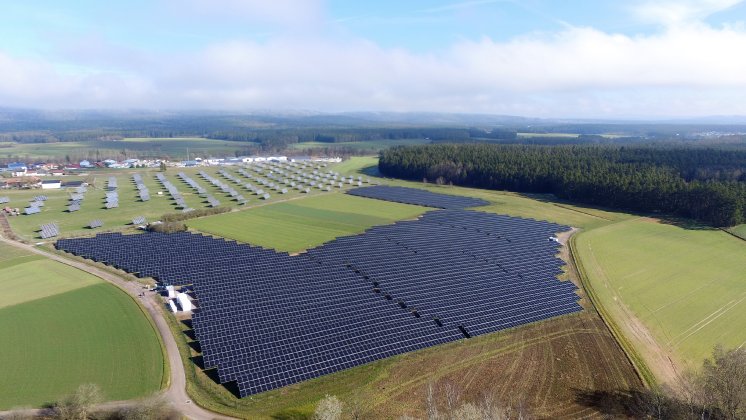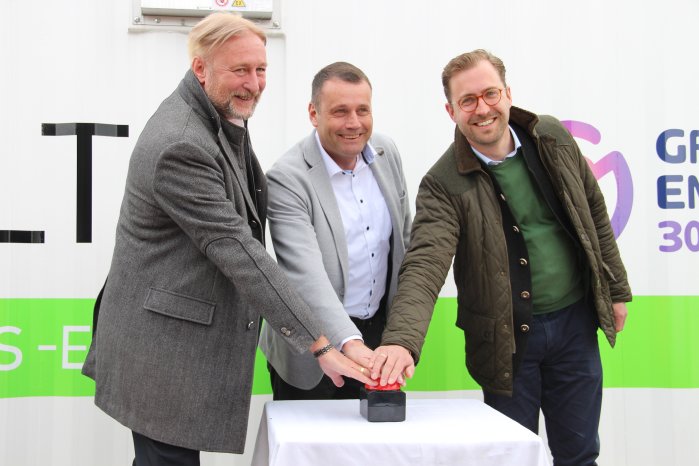The Schnaittenbach community moves ahead in terms of energy
With almost 50 invited guests, including local politicians, component manufacturers and service providers - the project team first toasted the opening of the 7.2 MW hybrid plant in Weiherhammer. Minister of State Aiwanger greeted the guests via video message: “We need intelligent solutions to bring peaking renewable electricity into a base load. For this purpose, storage batteries are a particularly good solution.”
The common message of the event was that when it comes to storage batteries, “we have to really step on the gas and there is still a lot of catching up to do, especially in Bavaria”, said District Administrator (Landrat) Richard Reisinger.
The community of Schnaittenbach is setting a good example here. Now with two solar parks and three wind turbines, the residents could, in terms of numbers, already be supplied with more than 180% of their energy from renewable sources, as announced by Uwe Bergmann, second Mayor of Schnaittenbach.
After a construction period of eight months, the solar park has been feeding renewable electricity into the grid since as early as mid-January 2023. The solar system is supplemented by a storage battery with a capacity of 2.4 MW or 2.8 MWh. The generated electricity can therefore be kept in reserve for about two hours and fed into the grid at more optimal conditions within this time span. This contributes to grid stability.
With the integration of the storage technology, the plant was then fully commissioned at the end of February 2023. The approximately 11,200 solar modules can supply more than 2,600 households with sustainable electricity annually, thus saving 3,800t of CO2.
Less energy loss due to direct current
After a change of location to Schnaittenbach, the eagerly awaited glimpse into the interior of the battery storage facility was offered. In perfect sunshine, the guests present were able to put their questions to the project team and representatives of the storage battery manufacturer as well as other main components.
For Green Energy 3000, this is already the third combined plant that the company has realised. Based on the experience gained in the meantime, the coupling of the plant was designed to be more efficient and now runs, as one of the first German plants of this kind, on the DC side. As a result, fewer power conversions are needed on the way to the grid, and less energy is lost.
Andreas Renker, Managing Director of Green Energy 3000, adds: “The construction and operation of RE plants with storage batteries have become a matter of routine for us. With the commissioning of what is now the third plant of this kind, we have proven the practicality of the technology and the plant control procedures. Low-cost electricity from solar and wind power plants can no longer be used only when it is generated. The energy from renewable energy sources becomes available when it is needed. This will ensure that we have a cheap and reliable electricity supply in the long term.”
Hybrid plant as investment opportunity
The hybrid system is subsidised by a tariff from the innovation tender of the Federal Network Agency. The electricity generated is reimbursed via a PPA and traded on the electricity exchange via a direct marketer.
Fifty-one per cent of the park will remain in the Green Energy 3000 group of companies and will be operated and managed by the company's subsidiary Green Asset 3000. The remaining forty-nine per cent were sold to an eco-fund where private investors can invest in sustainable projects.


